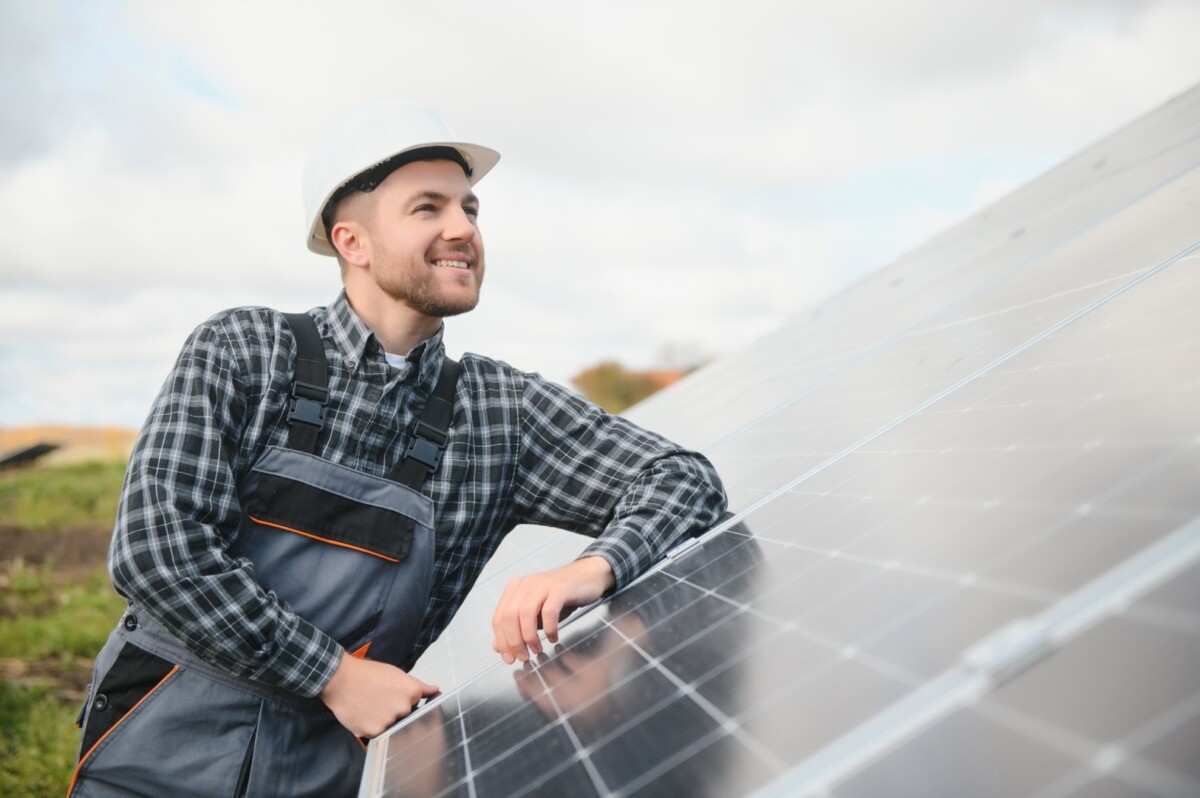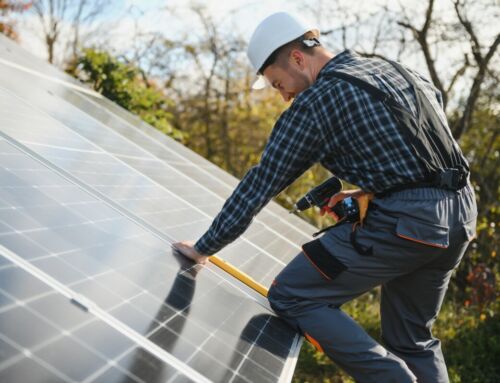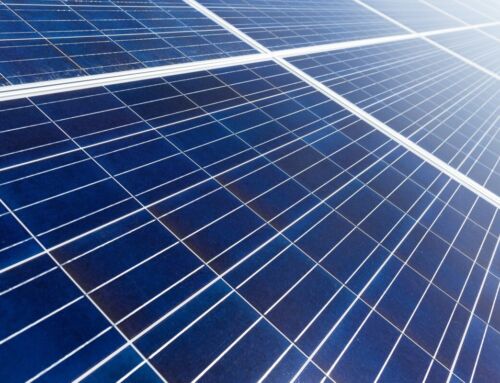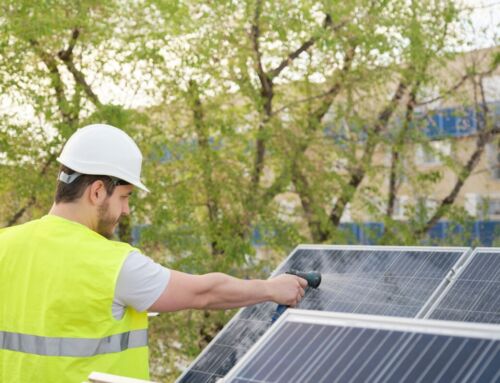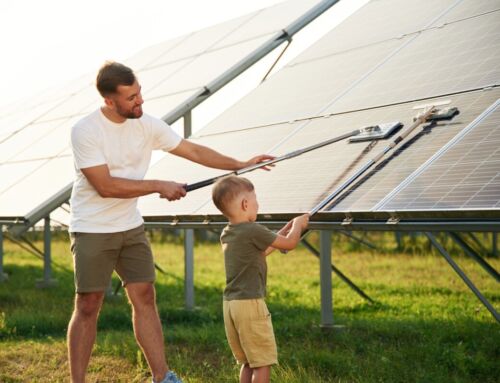Understanding Solar Panel Efficiency in Cold Climates
When considering the
Best Solar Panels For Cold Climates, it’s crucial to understand how temperature affects solar panel efficiency. Contrary to popular belief, solar panels can perform exceptionally well in colder environments. In fact, solar panels are more efficient at converting sunlight into electricity when temperatures are lower. This makes them an excellent choice for regions with cold climates, where they can still generate substantial energy even on chilly, sunny days.
How Cold Weather Enhances Solar Panel Performance
- Increased Efficiency: Solar panels operate more efficiently in cooler temperatures. The photovoltaic cells in solar panels work better when they are not overheated, allowing them to convert sunlight into electricity more effectively.
- Snow Reflection: Snow can reflect sunlight onto the panels, increasing the amount of light they receive and thus boosting energy production.
Choosing the Right Solar Panels
When selecting the best solar panels for cold climates, consider the following features:
- Durability: Ensure the panels are built to withstand snow loads and icy conditions.
- Temperature Coefficient: Look for panels with a low temperature coefficient, which indicates less efficiency loss in cold weather.
By understanding these factors, you can make an informed decision and choose the best solar panels for your cold climate needs.
How Do Solar Panels Perform in Snowy Conditions?
When considering the best solar panels for cold climates, it’s crucial to understand how they perform in snowy conditions. Solar panels are designed to withstand various weather conditions, including snow. In fact, snow can enhance their performance by reflecting sunlight onto the panels, increasing energy absorption. However, heavy snow accumulation can block sunlight, reducing efficiency temporarily until the snow melts or slides off.
Snow and Solar Panel Efficiency
- Reflective Benefits: Snow acts as a mirror, reflecting additional sunlight onto the panels, which can boost energy production.
- Temperature Effects: Cold temperatures can actually improve the efficiency of solar panels, as they operate more effectively in cooler environments.
- Self-Cleaning: Most solar panels are installed at an angle, allowing snow to slide off naturally, minimizing blockage and maintenance needs.
Considerations for Cold Climates
- Durability: Choose panels with robust frames and tempered glass to withstand heavy snow loads.
- Installation Angle: Ensure panels are installed at an optimal angle to facilitate snow shedding.
- Monitoring Systems: Implement monitoring systems to track performance and detect any issues promptly.
In conclusion, the best solar panels for cold climates are those that can efficiently harness sunlight even in snowy conditions, ensuring consistent energy production throughout the winter months.
Top Features to Look for in Cold Climate Solar Panels
When considering the
Best Solar Panels For Cold Climates, it’s crucial to understand that not all solar panels are created equal. Cold climates present unique challenges, such as heavy snowfall and shorter daylight hours, which can impact solar efficiency. Therefore, selecting the right solar panels ensures optimal performance and longevity, even in the harshest conditions.
Durability and Build Quality
- Robust Frames: Look for solar panels with strong, corrosion-resistant frames that can withstand heavy snow loads.
- High-Quality Glass: Tempered glass is essential for protecting the panels from hail and debris.
Efficiency in Low Light
Solar panels that perform well in low-light conditions are ideal for cold climates, where overcast skies are common.
Monocrystalline panels are often recommended due to their high efficiency and ability to generate power even on cloudy days.
Temperature Coefficient
The temperature coefficient indicates how well a solar panel performs as temperatures drop. Panels with a low temperature coefficient are less affected by cold weather, maintaining efficiency and energy output even in freezing conditions. Prioritizing this feature ensures that you get the most out of your solar investment year-round.
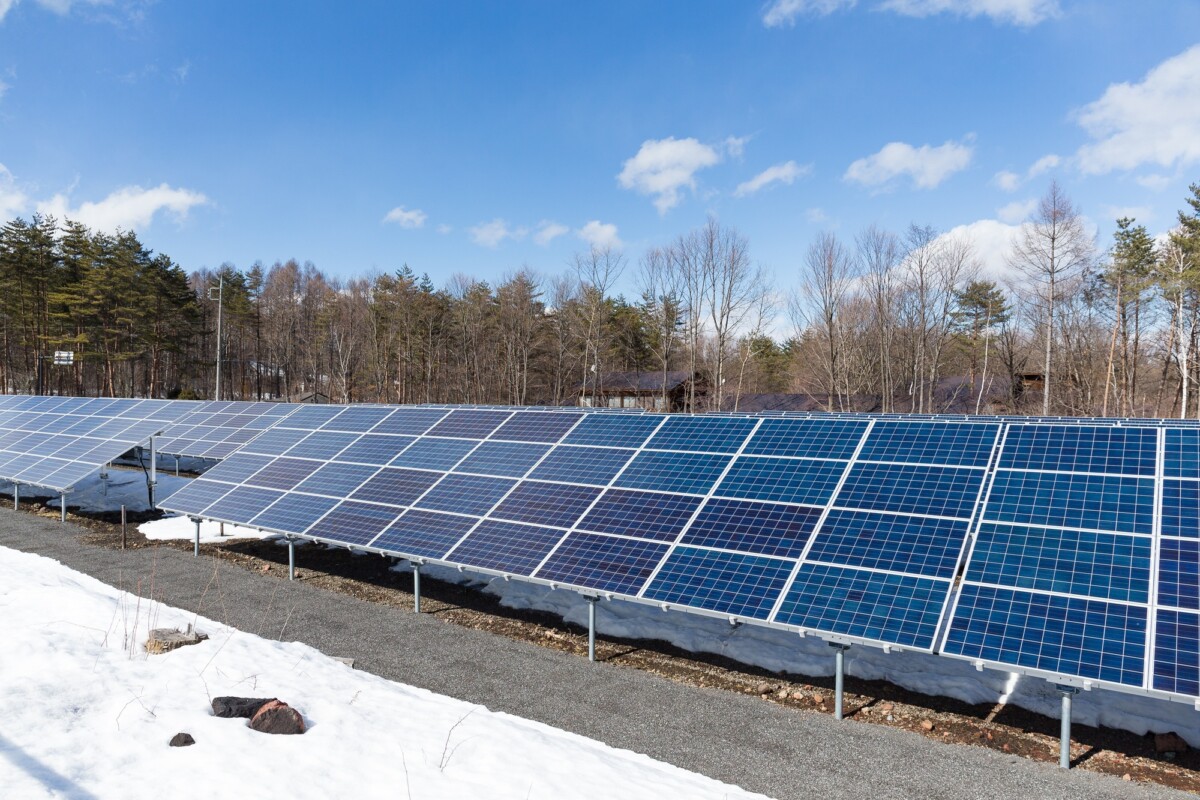
Thinking about solar energy? See how it can lower your bills and elevate your home’s efficiency. Get Your Free Estimate at NewSolar Quotes
Comparing the Best Solar Panels for Cold Climates
When considering solar energy in colder regions, it’s crucial to choose the best solar panels for cold climates. These panels are designed to perform efficiently even in low temperatures and snowy conditions, ensuring a reliable energy supply year-round. Understanding the key features of these panels can help homeowners make informed decisions.
Key Features of Cold Climate Solar Panels
- High Efficiency: Panels with high efficiency ratings are essential for maximizing energy production during shorter daylight hours in winter.
- Durability: Look for panels with robust construction to withstand snow loads and icy conditions.
- Temperature Coefficient: A lower temperature coefficient indicates better performance in cold weather.
Top Brands to Consider
- SunPower: Known for high efficiency and durability, SunPower panels are a top choice for cold climates.
- LG Solar: Offers excellent temperature coefficients and robust designs.
- Canadian Solar: Provides affordable options with reliable performance in cold weather.
By focusing on these features and brands, homeowners can ensure they select the best solar panels for cold climates, optimizing energy production and efficiency even in the chilliest conditions.
Do Solar Panels Work Better in Cold Weather?
When considering the
Best Solar Panels For Cold Climates, it’s crucial to understand how temperature affects solar efficiency. Contrary to popular belief, solar panels can actually perform better in colder weather. This is because solar panels are more efficient at converting sunlight into electricity when they are cooler, making them ideal for regions with lower temperatures.
How Cold Weather Enhances Solar Efficiency
- Increased Efficiency: Solar panels operate more efficiently in cooler temperatures. The photovoltaic cells in the panels convert sunlight into electricity more effectively when they are not overheated.
- Snow Reflection: Snow can reflect sunlight onto the panels, increasing the amount of light they receive and thus boosting energy production.
Choosing the Right Panels
Selecting the
Best Solar Panels For Cold Climates involves considering factors such as durability and efficiency. Look for panels with a high efficiency rating and robust construction to withstand harsh weather conditions. Additionally, panels with a good temperature coefficient will perform better in cold climates, ensuring consistent energy production year-round.
Innovative Technologies Enhancing Solar Panel Performance in Winter
When it comes to harnessing solar energy in colder climates, choosing the best solar panels for cold climates is crucial. These panels are designed to maximize efficiency even in low-temperature conditions, ensuring that you can still benefit from solar energy year-round. As technology advances, innovative solutions are emerging to enhance solar panel performance during winter months.
Advanced Materials and Coatings
- Anti-reflective Coatings: These coatings increase light absorption by reducing reflection, allowing panels to capture more sunlight even on cloudy days.
- Hydrophobic Surfaces: By repelling water and snow, these surfaces ensure that panels remain clear and functional, preventing energy loss due to snow accumulation.
Enhanced Energy Storage Solutions
With shorter daylight hours in winter, efficient energy storage becomes essential. Modern solar panels for cold climates often integrate with advanced battery systems that store excess energy generated during sunnier periods. This stored energy can then be used during overcast days, ensuring a consistent power supply.
Smart Monitoring Systems
Smart monitoring systems allow homeowners to track energy production and consumption in real-time. These systems can optimize panel performance by adjusting angles or identifying maintenance needs, ensuring that the best solar panels for cold climates operate at peak efficiency throughout the winter.
Maximizing Energy Output: Tips for Solar Panel Installation in Cold Regions
Harnessing solar energy in colder climates might seem challenging, but with the right approach, it can be highly effective. Choosing the
Best Solar Panels For Cold Climates is crucial for maximizing energy output. These panels are designed to perform efficiently even in low temperatures, ensuring that your investment pays off year-round. Understanding how to optimize their installation can further enhance their performance.
Consider Panel Efficiency and Temperature Coefficient
When selecting solar panels, focus on their efficiency and temperature coefficient. Panels with higher efficiency ratings convert more sunlight into electricity, which is vital during shorter winter days. The temperature coefficient indicates how well a panel performs as temperatures drop. Look for panels with a low temperature coefficient to ensure they maintain high output in cold weather.
Optimize Panel Placement and Angle
Proper placement and angling of solar panels can significantly impact their performance in cold regions. Install panels at an angle that maximizes sun exposure, particularly during the winter months when the sun is lower in the sky. Additionally, ensure that panels are free from obstructions like snow or ice, which can hinder their efficiency.
- Regular Maintenance: Keep panels clean and free from snow accumulation.
- Use Tilt Mounts: Adjustable mounts can help optimize the angle seasonally.
By focusing on these factors, you can ensure that your solar panels deliver optimal performance, even in the chilliest climates. Investing in the
Best Solar Panels For Cold Climates and following these installation tips will help you harness the sun’s power efficiently, regardless of the temperature.
The Role of Temperature Coefficients in Solar Panel Selection
When considering the
best solar panels for cold climates, understanding temperature coefficients is crucial. These coefficients indicate how well a solar panel performs as temperatures fluctuate. In colder regions, panels with optimal temperature coefficients ensure efficient energy production, even when the mercury drops. This makes them a vital factor in selecting the right solar panels for your needs.
Understanding Temperature Coefficients
- Definition: Temperature coefficients measure the change in a solar panel’s efficiency with temperature variations.
- Importance: Panels with lower temperature coefficients are less affected by cold, maintaining higher efficiency.
Why It Matters in Cold Climates
Cold climates can be challenging for solar energy systems. However, panels with favorable temperature coefficients can harness sunlight effectively, even in chilly conditions. This ensures consistent energy output, making them the best solar panels for cold climates. By choosing panels with the right coefficients, you can maximize energy efficiency and reliability year-round.
Key Considerations
- Efficiency: Look for panels with lower temperature coefficients for better performance in cold weather.
- Durability: Ensure the panels are built to withstand harsh winter conditions.
In conclusion, selecting solar panels with the right temperature coefficients is essential for optimizing energy production in cold climates. By focusing on these factors, you can ensure your solar system operates efficiently, providing sustainable energy throughout the year.
How NewSolarQuotes Can Help You Choose the Best Solar Panels for Cold Climates
Choosing the best solar panels for cold climates is crucial for maximizing energy efficiency and ensuring long-term performance. Cold weather can affect solar panel efficiency, but with the right choice, you can harness solar energy effectively even in chilly conditions. At NewSolarQuotes, we understand the unique challenges posed by colder climates and are here to guide you through selecting the most suitable solar panels for your needs.
Key Considerations for Cold Climate Solar Panels
- Temperature Coefficient: Opt for panels with a low temperature coefficient to ensure minimal efficiency loss in cold weather.
- Durability: Choose panels that are built to withstand snow loads and harsh winter conditions.
- Efficiency Ratings: High-efficiency panels are crucial for maximizing energy capture during shorter daylight hours.
Benefits of Choosing the Right Panels
- Increased Energy Output: Properly selected panels can maintain high energy output despite cold temperatures.
- Cost Savings: Efficient panels reduce reliance on traditional energy sources, lowering utility bills.
- Environmental Impact: Utilizing solar energy reduces carbon footprint, contributing to a sustainable future.
At NewSolarQuotes, we offer expert advice and a wide selection of solar panels tailored for cold climates. Our team is dedicated to helping you find the best solar panels for cold climates, ensuring you enjoy optimal performance and savings.
Real-World Case Studies: Solar Panel Success Stories in Cold Climates
Harnessing solar energy in cold climates might seem counterintuitive, but the
best solar panels for cold climates are designed to thrive in these conditions. Cold temperatures can actually enhance solar panel efficiency, as photovoltaic cells perform better in cooler environments. This section explores real-world success stories where solar panels have excelled in cold regions, proving their worth and reliability.
Case Study 1: Norway’s Arctic Circle
- Location: Tromsø, Norway
- Challenge: Limited sunlight during winter months
- Solution: High-efficiency monocrystalline panels
- Outcome: Despite long winters, Tromsø’s solar installations provide significant energy savings, with panels performing optimally during sunny, cold days.
Case Study 2: Canada’s Northern Territories
- Location: Yellowknife, Canada
- Challenge: Extreme cold and snow coverage
- Solution: Bifacial solar panels with snow-shedding capabilities
- Outcome: These panels capture sunlight from both sides, maximizing energy even with snow cover, leading to a 20% increase in energy output during winter.
These case studies highlight that the
best solar panels for cold climates are not just about surviving harsh conditions but thriving in them. By selecting the right technology and installation strategies, solar energy can be a viable and efficient solution even in the coldest parts of the world.
Switch to solar and start saving now! Don’t miss out on a cleaner, cost-effective energy solution. Schedule Your Free Consultation at NewSolar Quotes
Discover more ways to save with solar! Visit New Solar Quote and see the potential for your home. 

